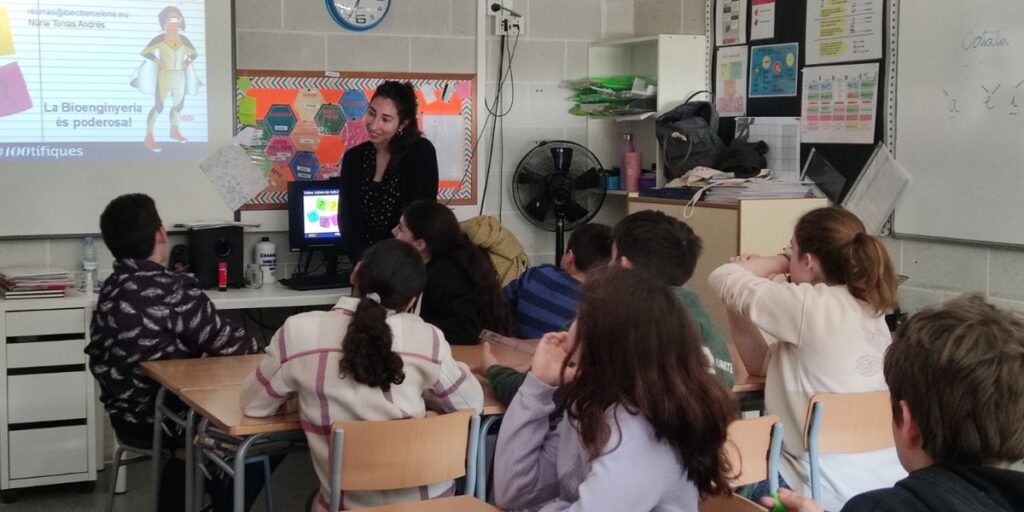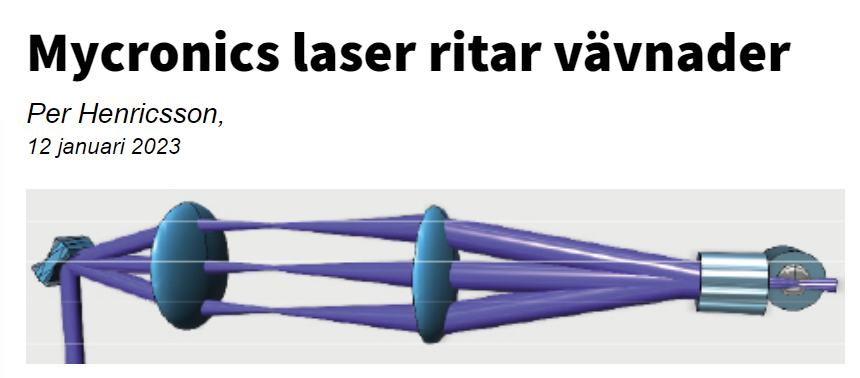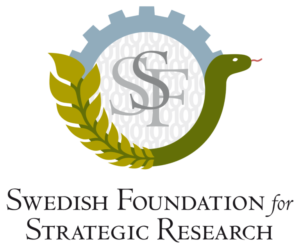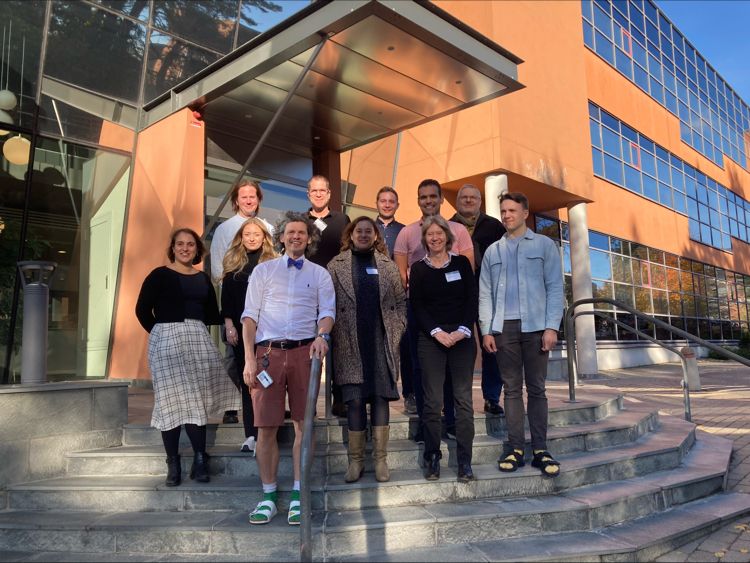Last 11 of February, Nuria Torras, B-BRIGHTER researcher at the Institute of Bioengineering of Catalonia (IBEC), went to a school near Barcelona to explain her research and show that women can also be excellent scientists!

Every year since 2015, on the 11 of February we celebrate the International Day of Women and Girls in Science, declared by the United Nations. The main objective of this worldwide event is to eradicate gender stereotypes and established prejudices that have hindered the involvement of girls and women in science. Globally, this day stands as an engagement to offering comprehensive and unbiased opportunities for women and girls within the scientific domain. The various activities put forth are geared towards fostering the empowerment of women and girls, fostering their engagement in scientific pursuits, and advancing the cause of gender parity.
In this context, Nuria Torras, researcher at the Biomimetic systems for cell engineering group from Elena Martinez at IBEC in Barcelona, took part in the 8th International Day of Women and Girls in Science. She participated in the annual event 100tifiques, organized by the Catalan Foundation for Research and Innovation (FCRI) and the Barcelona Institute of Science and Technology (BIST), an initiative that aims to bring science closer to schools and claim the female scientific talent.
Nuria gave a talk to about 30 students (11 years-old) from the Creu Alta School at Sabadell, a city near Barcelona. She explained a little bit the work done in B-Brighter project and talked about the principles of 3D printing, the biological models, the material and cell types they use in the laboratory. Among the questions students asked Nuria, one was very original: “Can humans eat what you use to feed the cells in the laboratory?” Who knows… Maybe in the future this will arrive!
To conclude her participation, Nuria explained her trajectory to become a scientist and make them realize that a scientist is an ordinary person who also has a family, hobbies… and can also be a women! Students were very interested and motivated and took the opportunity to exchange with Nuria not only about science but also about being a female scientist.



